Artillery and Armour in the USA: Vermont
Artillery, Tanks and Armoured Fighting Vehicles in Vermont
One of the aims of this website is to locate, identify and document every historical piece of artillery and all armoured fighting vehicles preserved in New England. Many contributors have assisted in the hunt for these tangible pieces of our military history and the list you see here is constantly being revised as new finds are discovered and the data is updated. The photos have come from various contributors, but the author likes to "ground truth" the reports, so a good number of the photos are by the author unless otherwise credited. Any errors found here are by the author. It often happens that military monuments that are relatively mobile, have been moved for restoration or scrapped, sometimes they are repainted with different markings and serial numbers, or they are replaced with a different piece of kit. For those reasons, any additions, deletions, corrections or amendments that you may be able to add to this list of Artillery and AFVs in New England would be most welcome and may be e-mailed to the author at [email protected]. The primary aim is preserve our military history and to keep the record accurate.
Arlington

(Larry Kelley Photo)

(Jack Photo)
M60A3 Main Battle Tank (Serial No. 3956A), American Legion Post 69, 54 Legion Rd. Similar to this one on display at Camp Mabry, Austin, Texas.
Barton
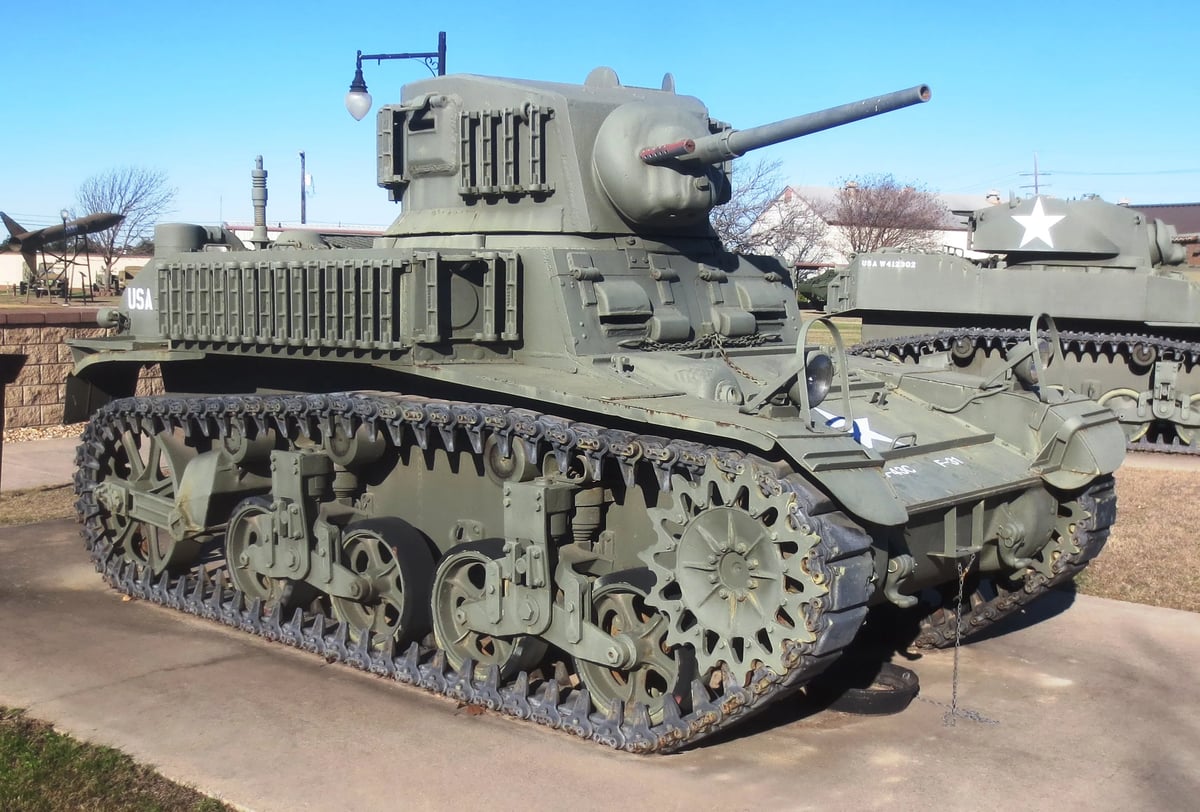
(Author Photo)
M3 Stuart Light Tank. Private owner. Similar to this one on display with the 3rd Cavalry Museum, Fort Hood, Texas.
Bennington

(Bennington Museum Photo)
Bronze 1-pounder smoothbore muzzle-loading Gun, Jan and Pieter Verbruggen, mounted on a wheeled carriage, captured at the Battle of Bennington, on display in the Bennington Museum. The Battle of Bennington was one of the pivotal early battles of the Revolutionary War. As British forces marched toward Bennington, they were intercepted just across the border in New York State and were defeated by the colonists on 16 August 1777.

(Author Photo)
M113 Armoured Personnel Carrier (APC), Vermont Veterans Home, 325 North Rd. Similar to this one on display at 5 Canadian Division Support Base Gagetown, New Brunswick.
Bomoseen

(Author Photo)
M60A3 Main Battle Tank (Serial No. 3962A), American Legion Post 50, Rte 4A W. Similar to this one on display at Camp Mabry, Austin, Texas.
Bradford




(Alfred DeVaux Photos)
M60A1/A3 Main Battle Tank (Serial No. unknown), Vermont ARNG Armory, Fairground Road.
Brandon

(Author Photo)
M48A5 Patton Tank, Legion post 55, Franklin St 55. Similar to this on on display at the 1st Armoured Cavalry Museum, Fort Hood, Texas.
Bristol
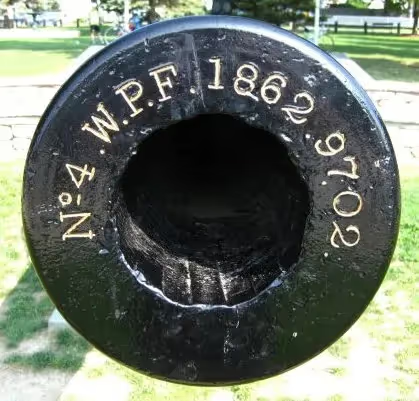

(Peter Flood Photo)
6.4-inch (100-pounder) Naval Parrot Rifle mounted on a wheeled iron carriage, No. 4, WPF, 1862, Serial No. 9702 on the muzzle, with the Civil War memorial.
Burlington


(Vermontish Photos)
75-mm M116 Pack Howitzer, Battery Park.




(Vermontish Photos)
32-pounder M1864 (6.2-inch) Dahlgren Shell Gun, 4,500 lbs, mounted on an iron carriage, Battery Park.
Chester

(Town of Chester Photo)
4.2-inch (30-pounder) Parrott Rifle, mounted on an iron stand beside the Civil War Memorial.

(Leon Reed Photo)
32-pounder M1864 (6.2-inch) Dahlgren Shell Gun, 4,500 lbs, mounted on a concrete stand in the town cemetery.
Colchester, Camp Johnston, Vermont National Guard Library and Museum

(Author Photo)
M42A1 Duster Anti-Aircraft armoured fighting vehicle with twin 40-mm Anti-aircraft guns, similar to this one at the Louisiana National Guard Museum, New Orleans, Louisiana.
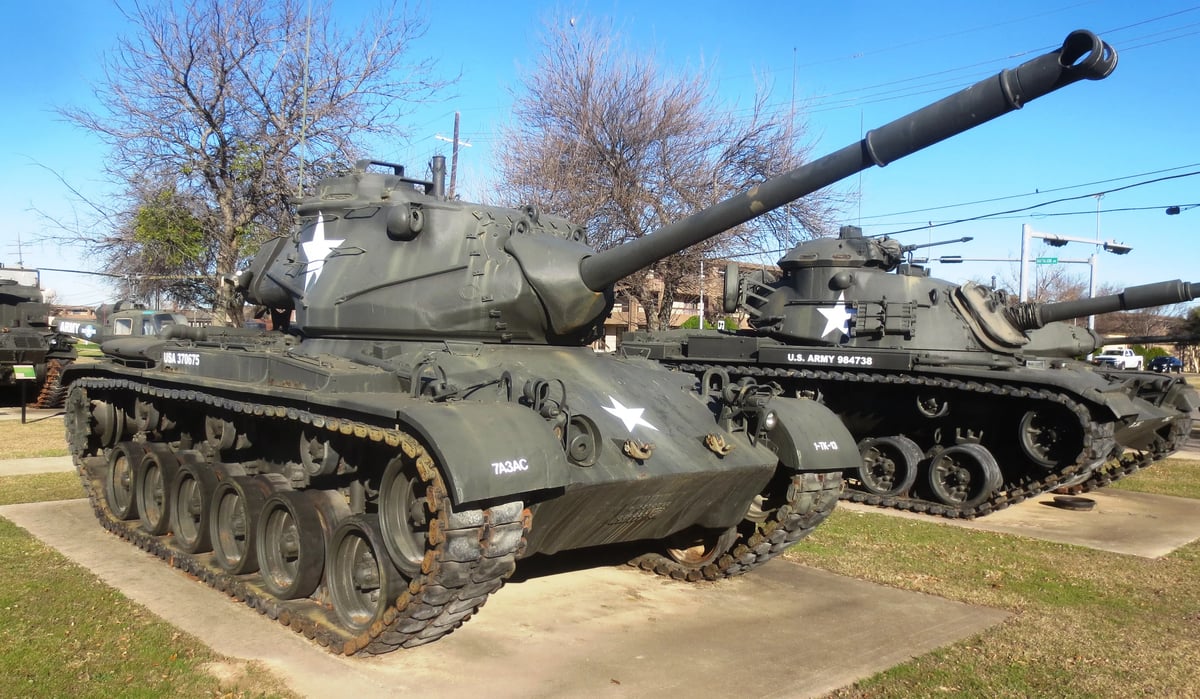
(Author Photo)
M47 Patton Main Battle Tank with 90-mm Gun, similar to this one on display at 3rd Armored Cavalry Regiment Museum, Fort Hood, Texas.
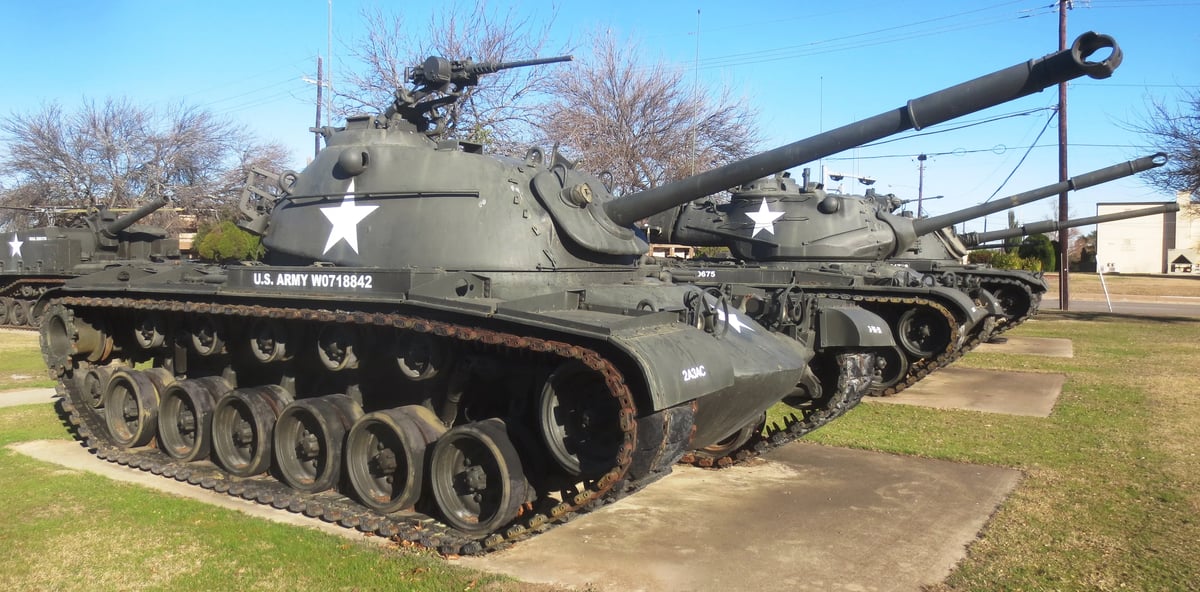
(Author Photo)
M48A5 Patton Main Battle Tank, similar to this one on display at 3rd Armored Cavalry Regiment Museum, Fort Hood, Texas.

(Author Photo)
M551 Sheridan Light Tank, similar to this one on display at 3rd Armored Cavalry Regiment Museum, Fort Hood, Texas.

(Author Photo)
M578 light armoured recovery vehicle. Similar to this one found at the New Brunswick Military History Museum, RCEME compound.

(Author Photo)
M60A3 FT main battle tank with 105-mm Gun. Similar to this one found at Camp Mabry, Texas.
M60A0 Tank with dozer blade.
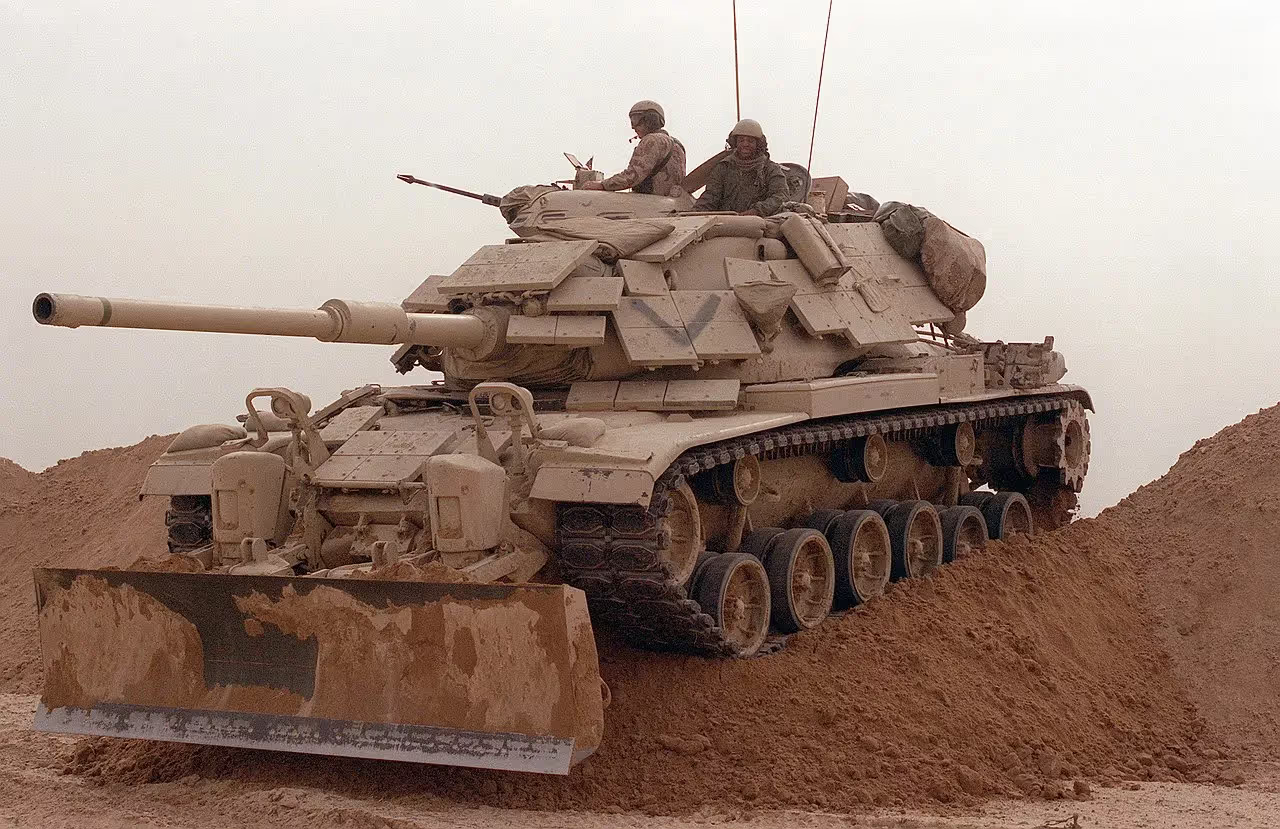
(PD-USGOV-MILITARY, Staff Sgt. M.D. Masters Photo)
Marines from Company D, 2nd Tank Battalion, drive their M-60A1 main battle tank over a sand berm on Hill 231 while rehearsing their role as part of Task Force Breach Alpha during Operation Desert Storm. The tank is fitted with reactive armor and an M-9 bulldozer kit, 25 Jan 1991.
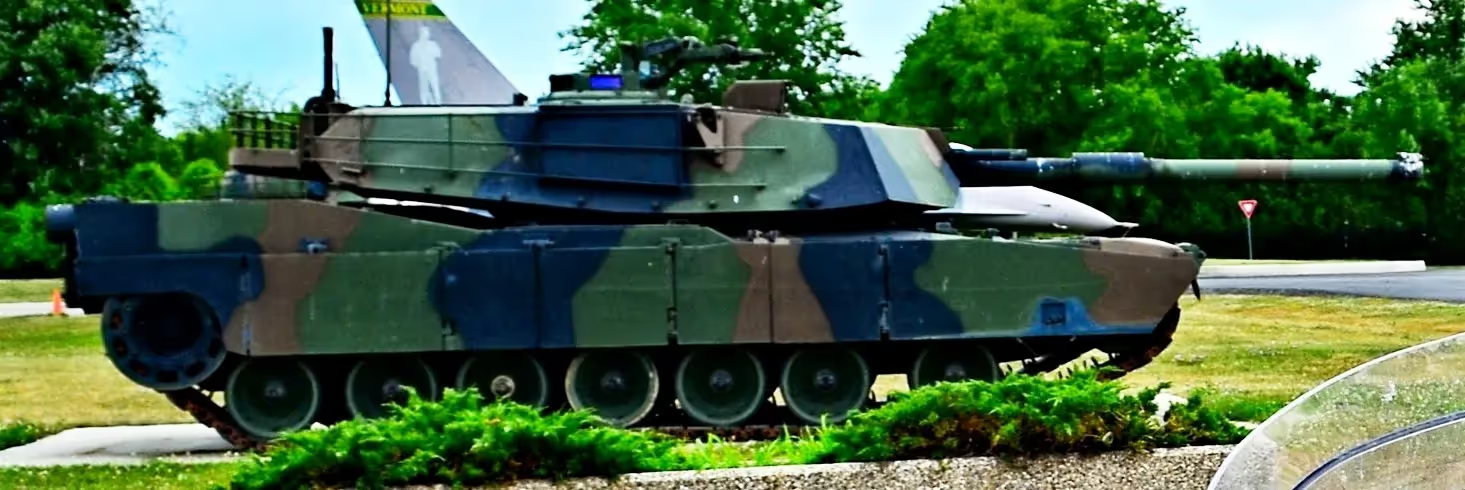
(nomadwillie Photo)
M1 Abrams Main Battle Tank, 105-mm Gun.

(Author Photo)
M113A1 APC. Similar to this M113A2 on display at the 1st Cav Museum, Fort Hood, Texas.

(US Army Signal Corps Photo)
M7B1 105-mm Priest SP Gun of the 14th Armored Field Artillery Battalion of the 2nd Armored Division at the intersection of Holgate Street and the railway line Paris-Cherbourg, Carentan, France, 18 June 1944.

(Author Photo)
M7 105-mm Priest Self-Propelled Gun. Similar to this one on display at the 1st Cavalry Division Museum, Fort Hood, Texas.

(Author Photo)
M109A3 155-mm Paladin Self-Propelled Gun. Similar to this one on display at the Centreville cenotaph, New Brunswick.

MT-LB, Soviet APC. Similar to this one on display at the Louisiana National Guard Museum, New Orleans, Louisiana.

(Author Photo)
75-mm Model 1897 Field Gun. Similar to this one on display at the Louisiana National Guard Museum, New Orleans, Louisiana.

(Author Photo)
155-mm M114 Howitzer, similar to this one at 30th Field Regiment, Uplands near Ottawa, Ontario.

(Author Photo)
Russian quadruple-barreled ZPU-4 Type 56 14.5-mm anti-aircraft gun, similar to this one at the Louisiana National Guard Museum, New Orleans, Louisiana.
The ZPU (Russian anti-aircraft machine gun mount) is a family of towed anti-aircraft guns based on the Soviet 14.5×114-mm KPV heavy machine gun. It entered service with the Soviet Union in 1949 and is used by over 50 countries worldwide.

(Author Photo)
Russian S60 57-mm anti-aircraft gun, Syrian Army, similar to this one at CFB Kingston, Ontario
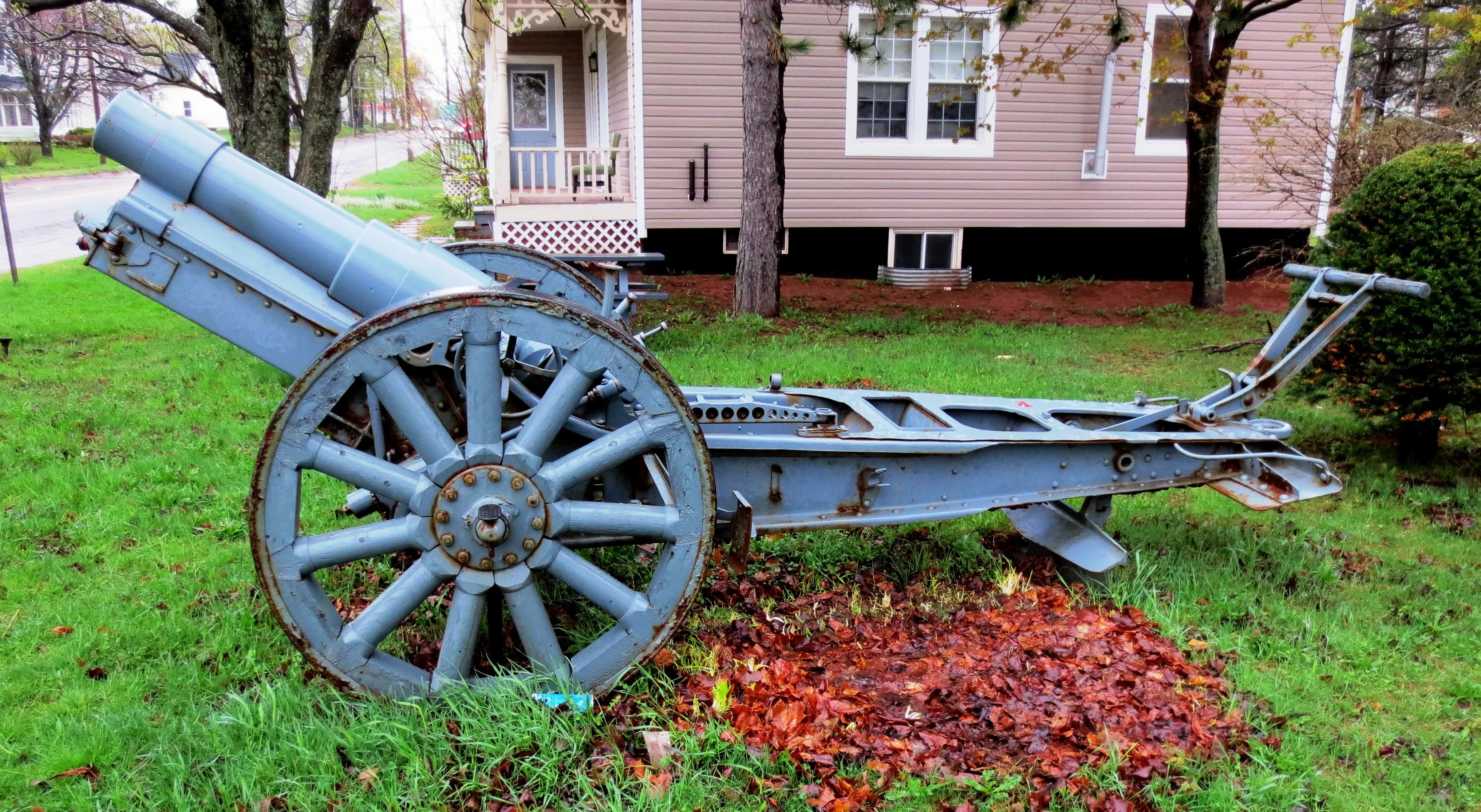
(Author Photo)
German First World War 15-cm schwere Feldhaubitze 1902 field gun (Serial Nr. 1449), similar to this one at Kensington, Prince Edward Island.
Coventry

(Vermont 251 in 365 Photo)
Bronze 6-pounder Model 1841 smoothbore muzzle-loading Field Gun mounted on a wheeled carriage, standing in front of the town Civil War memorial.
Derby

(Town of Derby Photo)
Cast iron possibly 3-inch Ordnance Rifle, mounted on a wheeled wooden gun carriage, held by a re-enactment group, displayed here near the Civil War Memorial.
East Barnett





(Alfred DeVaux Jr. Photos)
155-mm M1918 Howitzer (Canon de 155 C modèle 1917 Schneider), (Serial No. 634), 2,678 lbs.
Enosburg Falls

(Vermontish Photo)
4.2-inch (30-pounder) Parrott Rifle, mounted on a concrete stand in a town park.
Fair Haven


(Jennifer Snoots Photos)
6.4-inch (100-pounder) Naval Parrot Rifle mounted on a wheeled iron carriage.
Glover


(Alfred DeVaux Jr. Photos)
M20 (G-176) Armored Reconnaissance Utility Car. Private owner.


(Alfred DeVaux Jr. Photos)
American Car and Foundry M3A1 Stuart light tank. Private owner.
Isle La Motte



(Vermontish Photos)
Smoothbore Muzzleloading Naval Gun mounted on a wood carriage, located on the Library lawn.
Island Pond

(Vermontish Photo)



(Alfred DeVaux Photos)
M4A3(75) Sherman tank (Serial No. 2846), American Legion Post 80, 60 Railroad St.
Ludlow

(qcarr Photo)
M60A3 Main Battle Tank, Vermont National Guard Bldg. on 37 Main Street.
Lyndon

(Eleven Hotel Photo)




(Alfred DeVaux Photos)
M60A3 Main Battle Tank.
Middlebury

(Community Walk Photo)

(Jennifer Snoots Photo)
8-inch Rodman Gun (Columbiad, 8-inch, smoothbore, seacoast, Model 1844), weight 9,240-lbs, mounted on a concrete stand, located in downtown Middlebury, adjacent to Frog Hollow, The Sheldon Museum, the Ilsley Library, and the John Deere historical marker. Inscription: "This cannon was presented to W.P. Russell Post No. 89 G.A.R Dept. of Vt. in the year 1910 by the U.S. Govt." (G.A.R refers to the "Grand Army of the Republic", a fraternal organization of veterans of the Union Army who had served in the Civil War).
Middlesex

(Author Photo)
M5A1 Stuart Light Tank (Serial No. 5235), Camp Meade Victory Museum, 961 US Rte 2. Similar to this one on display at the 1st Cavalry Museum, Fort Hood, Texas.
Montpelier

(Author Photo)
Vermont State Capitol building, Montpelier, 20 Aug 2019.








(Author Photos)
Bronze smoothbore muzzle-loading Light Gun, mounted on a wheeled carriage with limber. This is a Hessian field piece, captured from Lieutenant Colonel Friedrich Baum's Hessian mercenaries at the Battle of Bennington. An inscription on top of the barrel reads: "Taken from the Germans at Bennington 16 Aug 1777". This gun stands in front of the State House portico.



(Author Photos, 20 Aug 2019)
Krupp 15-cm SK (schiffkanone) L/35 naval rifle of 1890 vintage, Krupp Steel, taken from the Spanish cruiser Castilla, sunk by Admiral Dewey's squadron in Manilla Bay, 1 May 1898. Mounted on an iron stand in front of the State House, No. 1 of 2. Admiral George Dewey was a native of Montpelier.



(Author Photos, 20 Aug 2019)
Krupp 15-cm SK (schiffkanone) L/35 naval rifle of 1890 vintage, Krupp Steel, taken from the Spanish cruiser Castilla, sunk by Admiral Dewey's squadron in Manilla Bay, 1 May 1898. Mounted on an iron stand in front of the State House, No. 2 of 2.

(Author Photo)
The two Krupp 15-cm SK (schiffkanone) L/35 naval rifles are located right and left of the front entrance to the State Capitol building.
Morrisville

(Gary Rushford Photo)
3-inch Ordnance Rifle, mounted on an iron stand, possibly Serial No. 783.

(Author Photo)
75-mm M1A4 Pack Howitzer, in front of the town war memorial. Similar to this one on display at the 1st Cavalry Museum, Fort Hood, Texas.
Northfield



(Alfred DeVaux Jr. Photos)
M4A3(75) Sherman Tank (Serial No. 11467), Norwich University, Sabine Field.

(Author Photo)
M1 Abrams Main Battle Tank, Norwich University. Similar to this one on display at the 1st Cavalry Museum, Fort Hood, Texas.
Orwell, Mount Independence
Mount Independence on Lake Champlain in Orwell, was the site of extensive fortifications built during the American Revolutionary War by the American army to stop a British invasion. Construction began in July 1776, following the American defeat in Canada, and continued through the winter and spring of 1777. After the American retreat on 5-6 July 1777, British and German troops occupied Mount Independence until November 1777. After the American Revolution, Mount Independence was farm land, used for grazing sheep and cattle. It is now a state historic site, and was designated a National Historic Landmark in 1972 for its historical significance.
Previously named Rattlesnake Hill, Mount Independence is located in Orwell, Vermont, on the east side of Lake Champlain opposite Ticonderoga, New York, and historic Fort Ticonderoga. At its narrowest, the lake is a quarter mile wide between Mount Independence and Ticonderoga. The decision to fortify Mount Independence was made at Fort Crown Point on 7 July 1776, by a Council of War presided over by Northern Department Commander and Major General Philip Schuyler. Less than a week earlier, an American army had returned after a disastrous ten-month invasion of Canada. Morale was low, and the defeated army was ravaged by smallpox. In a letter, Schuyler told commander in chief George Washington, the peninsula opposite Ticonderoga was “so remarkably strong as to require little labour [sic] to make it tenable against a vast superiority of force, and fully to answer the purpose of preventing the enemy from penetrating into the country south of it.”
Twenty-one field officers objected to the move from Crown Point to Mount Independence, but on 11 July work began on the new site under the direction of military engineer Jeduthan Baldwin of Brookfield, Massachusetts. Within the week, much of the army relocated to Ticonderoga while men labored on Mount Independence to clear the forest and build huts and barracks. Mount Independence is a naturally strong defensive position. Unlike Fort Ticonderoga, which dominated the portage from Lake George to Lake Champlain but was open to attack from the north, Mount Independence presented a formidable obstacle to an invader from Canada. At the height of the American fortification of Mount Independence in the late fall of 1776, the site was occupied by three brigades of New England troops or more than six thousand men, which were reinforced by temporary militia from Massachusetts, New Hampshire, and the New Hampshire Grants (the territory that was to become Vermont). Numerous huts and barracks housed these troops. An extensive breastwork with a battery of 28 cannons was built at the northern point of the peninsula. Above that position was the Citadel or Horseshoe battery. A star-shaped picket fort was later constructed on the height of land.
In the late spring of 1777, batteries designed by Polish military engineer Thaddeus K?ciuszko were constructed on the southeast side of Mount Independence.
During the four-month British and German occupation five blockhouses were begun to defend the east side against attack by land. By the end of October 1776, there were more than 13,000 men defending the fortifications at Mount Independence and Ticonderoga, making the location one of the largest population centers in the new country. (Wikipedia)

Map of Mount Independence as surveyed by British assistant engineer Lt. Charles Wintersmith in 1777. (University of Vermont Photo)
Springfield

(Author Photo)
M60A3 Patton Tank (Serial No. 3788A), Springfield Veteran's of Foreign Wars Post 771, VFW Dr. Similar to this one on display at the 1st Cavalry Museum, Fort Hood, Texas.
St. Albans

(Vermontish Photo)
155-mm M2 "Long Tom" Field Gun mounted on a Mk, 1 carriage.

(Vermontish Photo)
M4A3(75) Sherman Tank (Serial No. 12381), RN 30545536, 1-172nd Armor, ARNG Armory.
St. Johnsbury

(Daderot Photo)


(Peter Flood Photos)
3.67-in (20-lb) Naval Parrott Gun No. 107, from USS Kanawha. This ship was armed with one 11-inch Dahlgen smoothbore muzzle-loading gun, two 24-pounder moothbore muzzle-loading guns and two 20-pounder Parrot rifles.


(Peter Flood Photos)
3.67-in (20-lb) Naval Parrott Gun No. 126, from the USS Magnolia.

USS Kanawha, a Unadilla-class gunboat built for the Union Navy during the American Civil War. She was used by the navy to patrol navigable waterways of the Confederacy to prevent the South from trading with other countries. (19th Century phototype by F. Gutekunst, Philadelphia, depicting Kanawha "cutting out a blockade runner from under the guns of Fort Morgan", at the mouth of Mobile Bay, Alabama).

(Google Earth Photo)
5"/31-caliber Mk 1 naval rifle, of wire and hoop manufacture, with an interrupted-screw breech. Date of manufacture appears to be 1890s. Mounted on a concrete stand in front of the Chamber of Commerce near the center of town.
The 5"/31 caliber rifle (spoken "five-inch-thirty-one-caliber") were used in the secondary batteries of the USN's "New Navy" protected cruiser USS Chicago and later mounted in USS Panther during the Spanish-American War. Mark 1, Nos. 1 and 2, were 31 calibers and two of the first steel tube guns that were built entirely in the United States. They were trunnioned guns, no liners and that fired bag ammunition. After the Spanish-American War was over they were modified to Mod 1 in 1901. A liner was inserted in the breech end and the trunnions were cut off. The Mod 1 consisted of tube, jacket, and 9 hoops. After these changes the gun was able to use the same ammunition as the later Mk 2 5-inch gun. (Wikipedia).
._Port_bow%2C_1891_-_NARA_-_512893.jpg)
(NARA Photo, 512893)
USS Chicago, 1891.
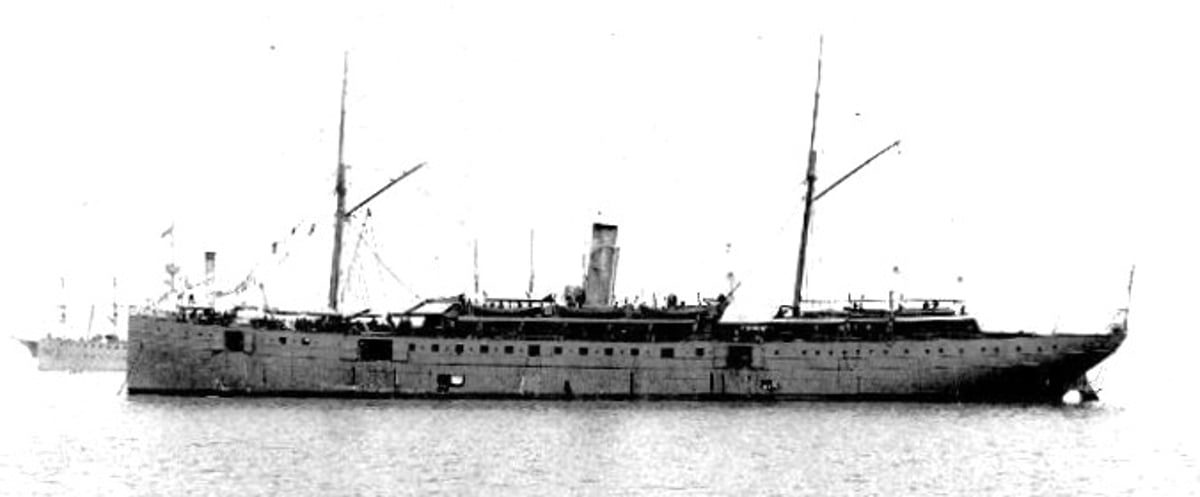
(USN Photo, N44471)
USS Panther, 1889.
USS Chicago and USS Panther. These two ships were the only ones in the USN to have been armed with the 5"/31-caliber Mk 1 naval rifle. It is therefore possible, though not confirmed, that the gun on display in St. Johnsbury most likely came from one of them. (USN Photos)
Stowe
3-inch Ordnance Rifle, Serial No. 266 (TBC), No. 1 of 2.


(Peter Flood Photos)
3-inch Ordnance Rifle, Serial No. 374, weight 816 lbs, manufactured by the Phoenix Iron Company, Phoenixville, Pennsylvania. Inspected by TTSL. No. 2 of 2.
West Rutland

(US Army Signal Corps Photo, 14 May 1901)
3-inch gun M1898M1, No. 120 Driggs-Seabury, rapid fire breech-loading artillery gun with a 360-degree traverse, located in Central Park.
Winooski


(Vermontish Photos)
M4A3(75) Sherman Tank (Serial No. 11550), RN 3053705, in front of the Winooski Veterans of Foreign Wars Post 1767, Main Street.
Woodstock

(Peter Flood Photo)
4.2-inch (30-pounder) Parrott Rifle, Naval Model, 3,470 lbs, Serial No. RPP No. 278 on the breeching ring and front site mount, P, RHH on the left trunnion. 1864, 30-POUNDER on the right trunnion. GAR Memorial Square.





